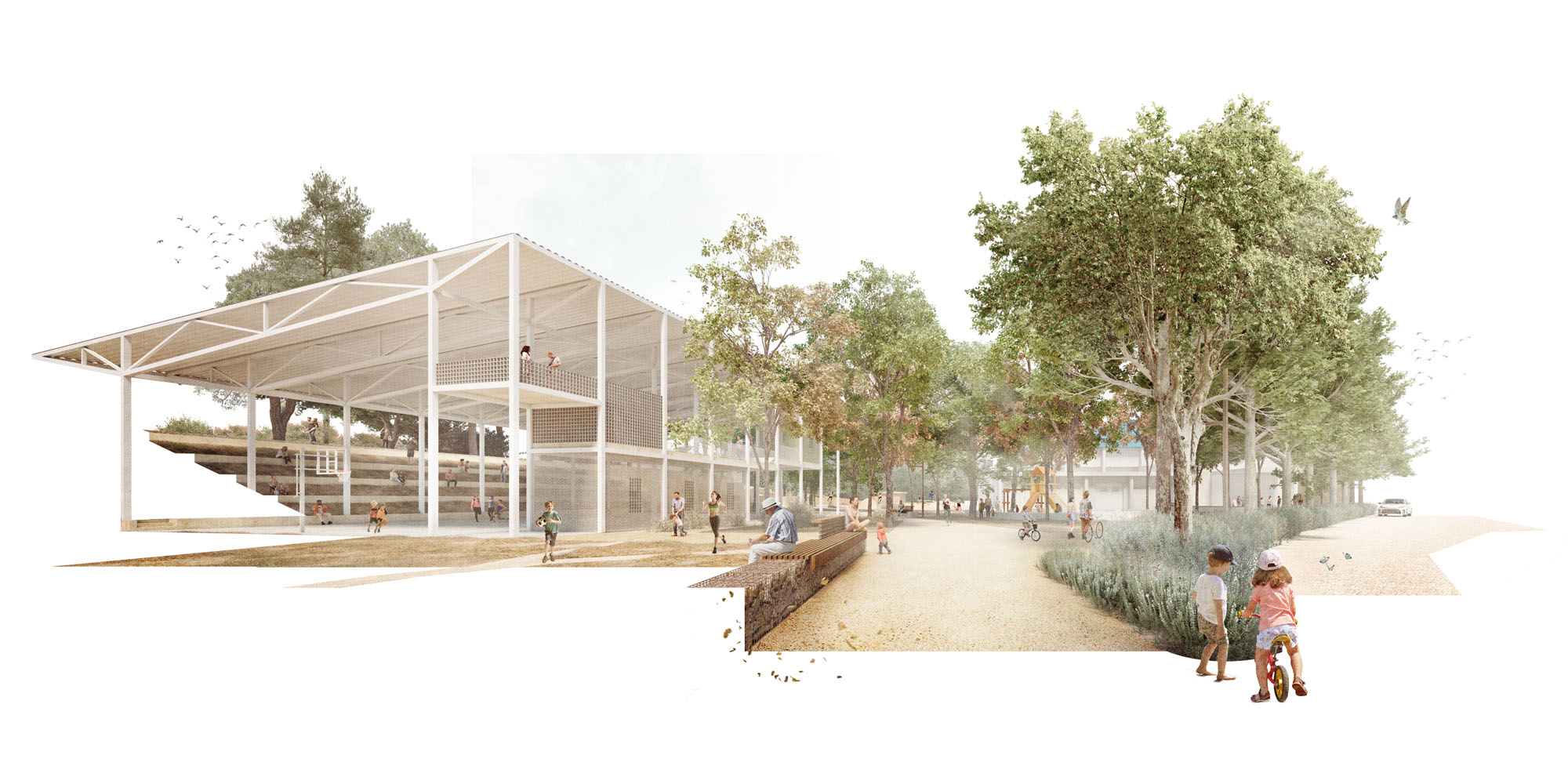
Blue Pavillion nearby: PARC DE CAL RIBES
PARC DE CAL RIBES
Competition for the urbanization of the surroundings of the Blue Pavilion in Navàs
Navàs, Barcelona 2023
Winner
Infographics Binil
The detailed reading of the current area of the pavilion allows us to identify numerous pre-existences of different nature. All these elements are currently disconnected from each other.
At the same time, we detect a lack of legibility of the urban access to the pavilion, which makes the pavilion and all its equipment hidden.
Our proposal understands all these elements as valuable resources existing on the site and therefore the planning proposal maintains them in their entirety. The development proposal introduces a new promenade that acts as a connector for all the existing elements, articulates them and gives them continuity. It also dignifies access to the Blue Pavilion. At the same time, it is the element that organizes the new spaces introduced such as the outdoor basketball court, the children’s games or the cafeteria terrace.
The promenade is the new backbone of this area and gives the place a new identity.
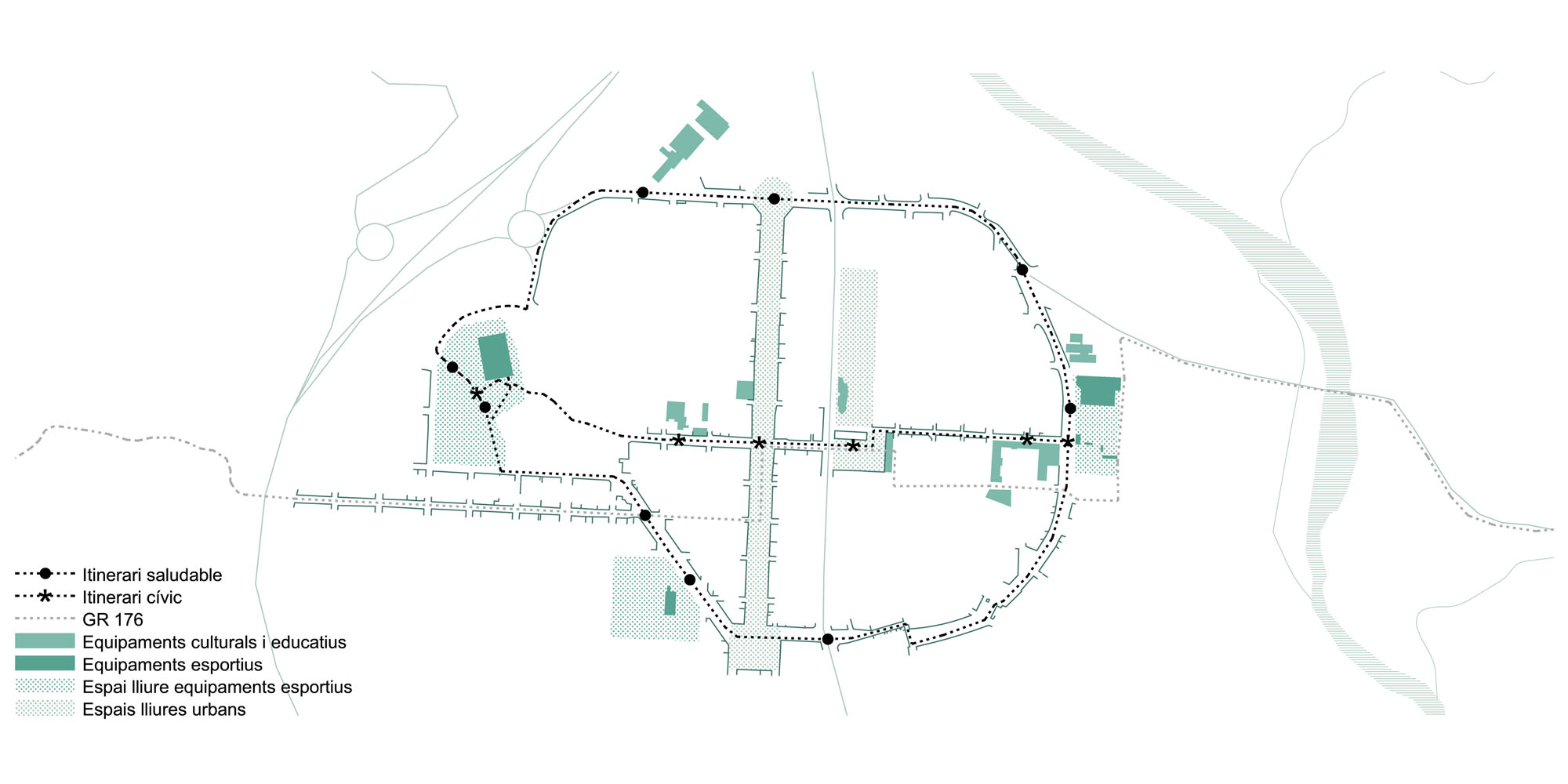

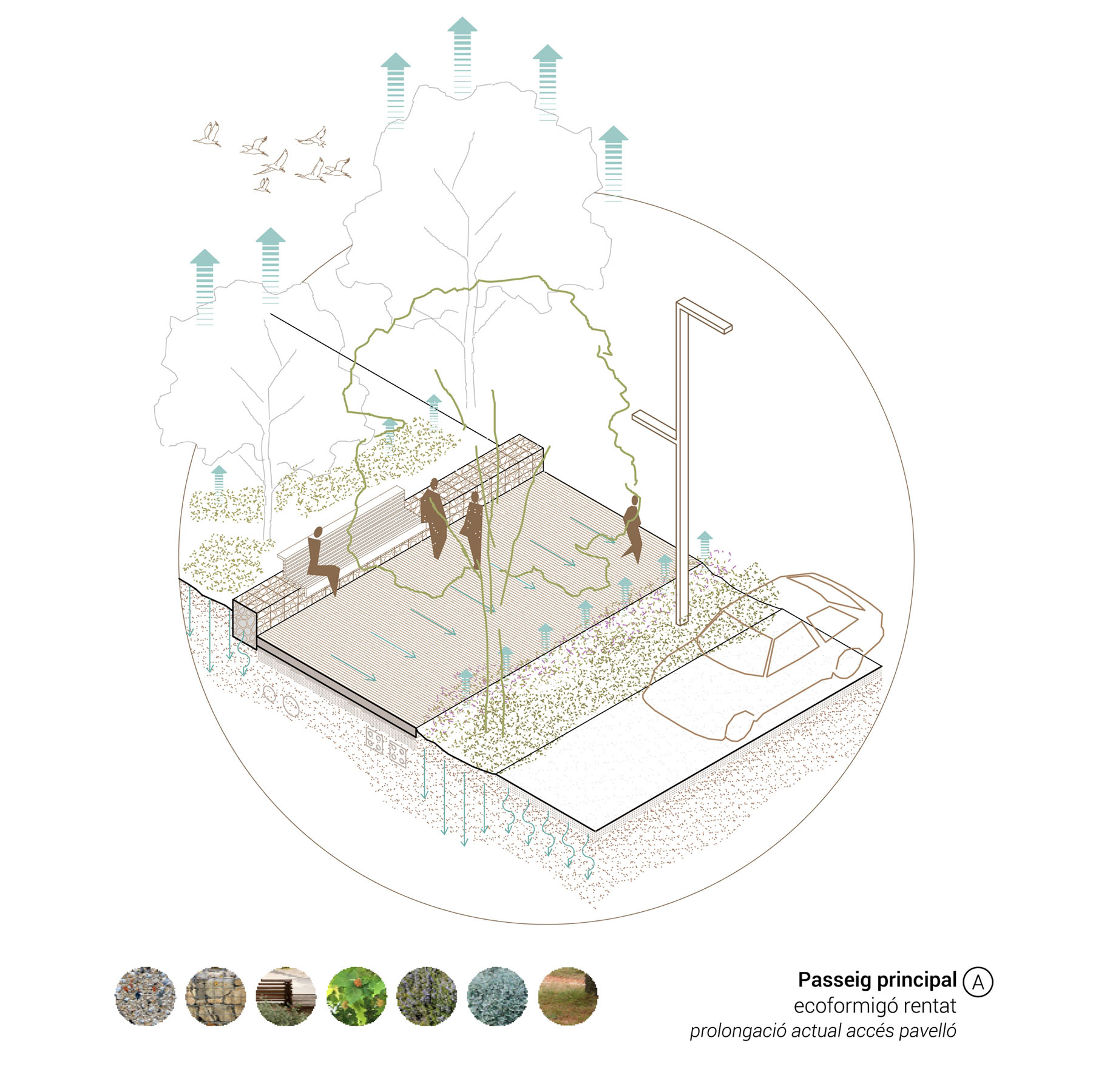
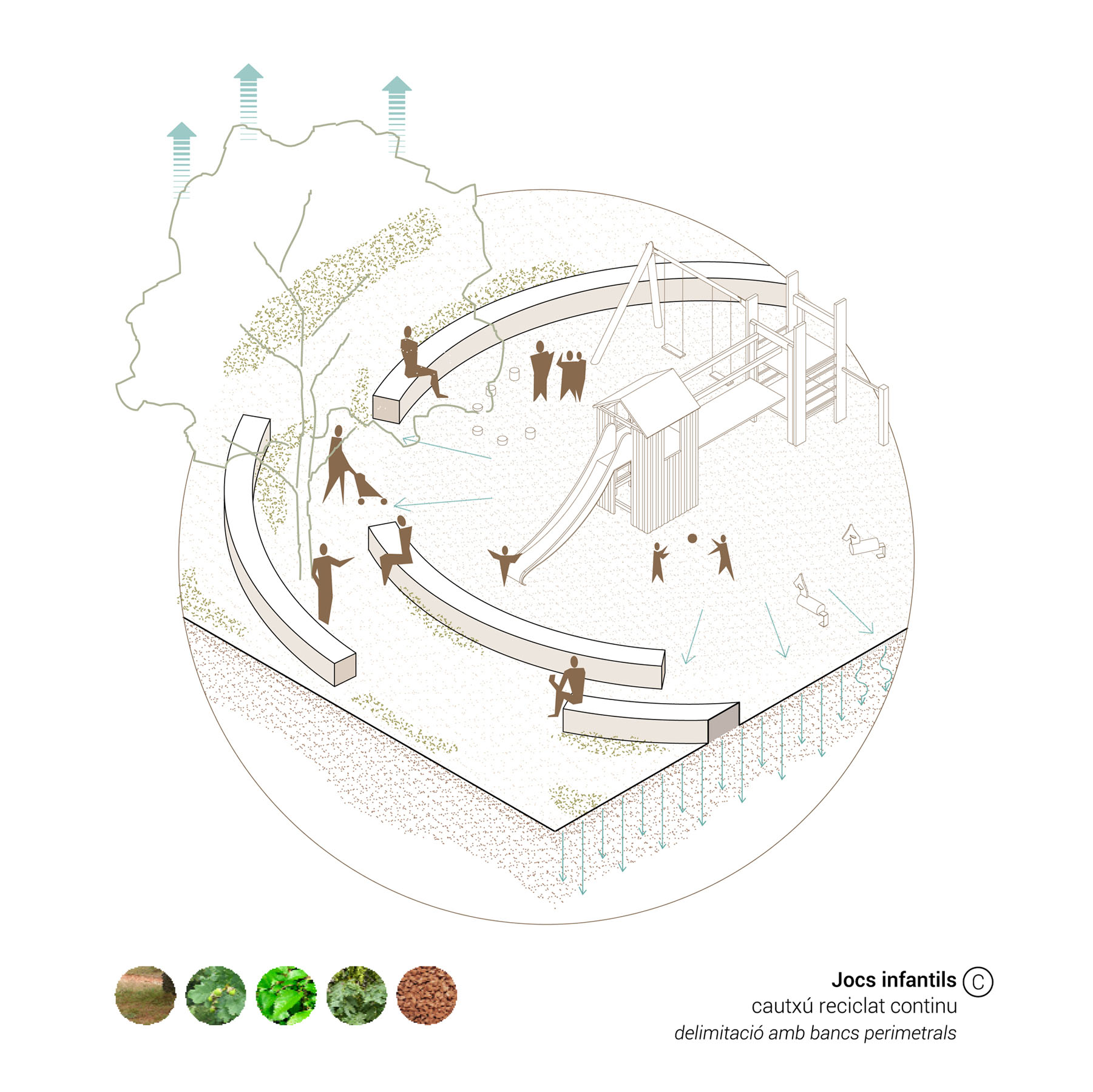
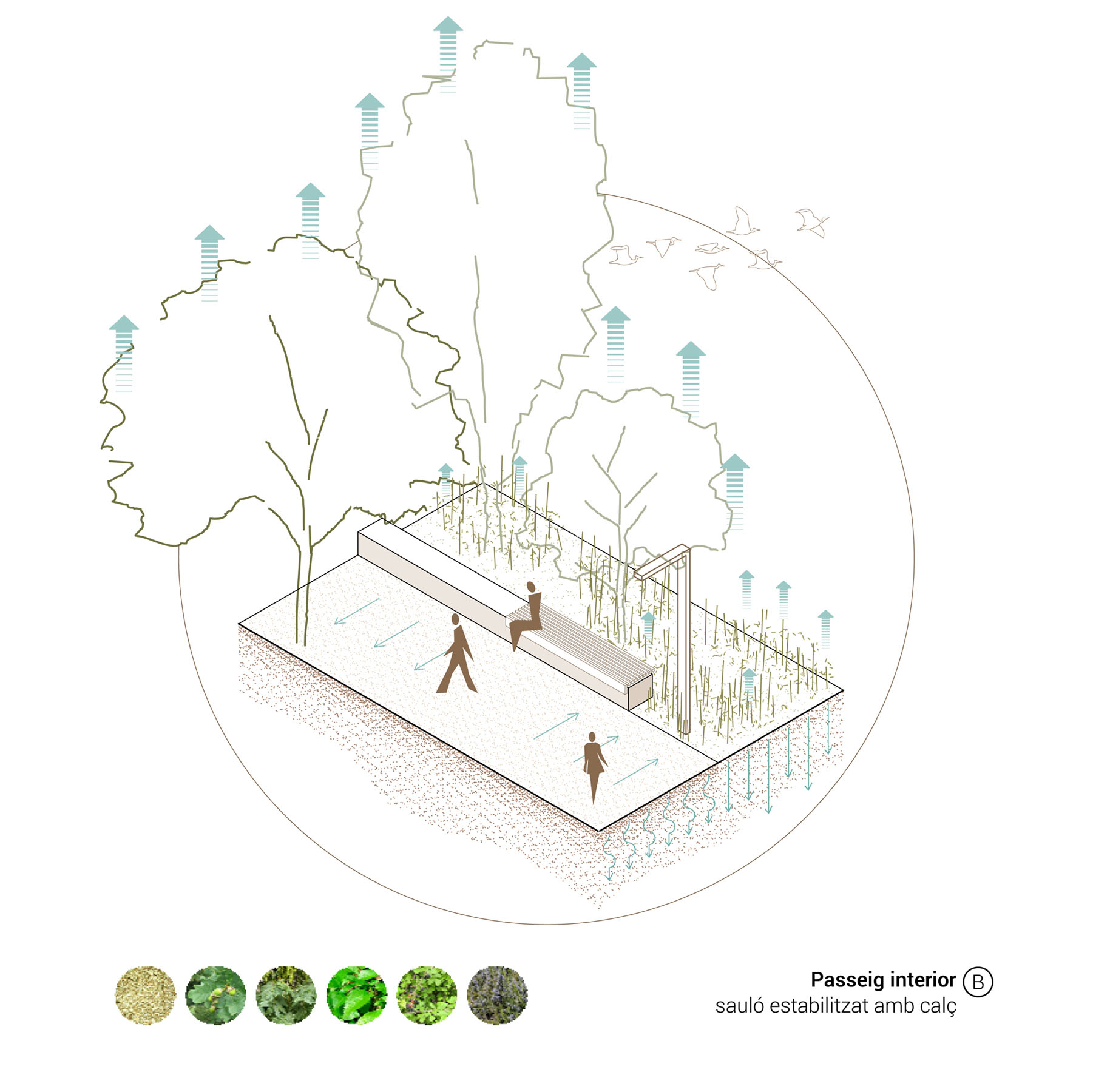
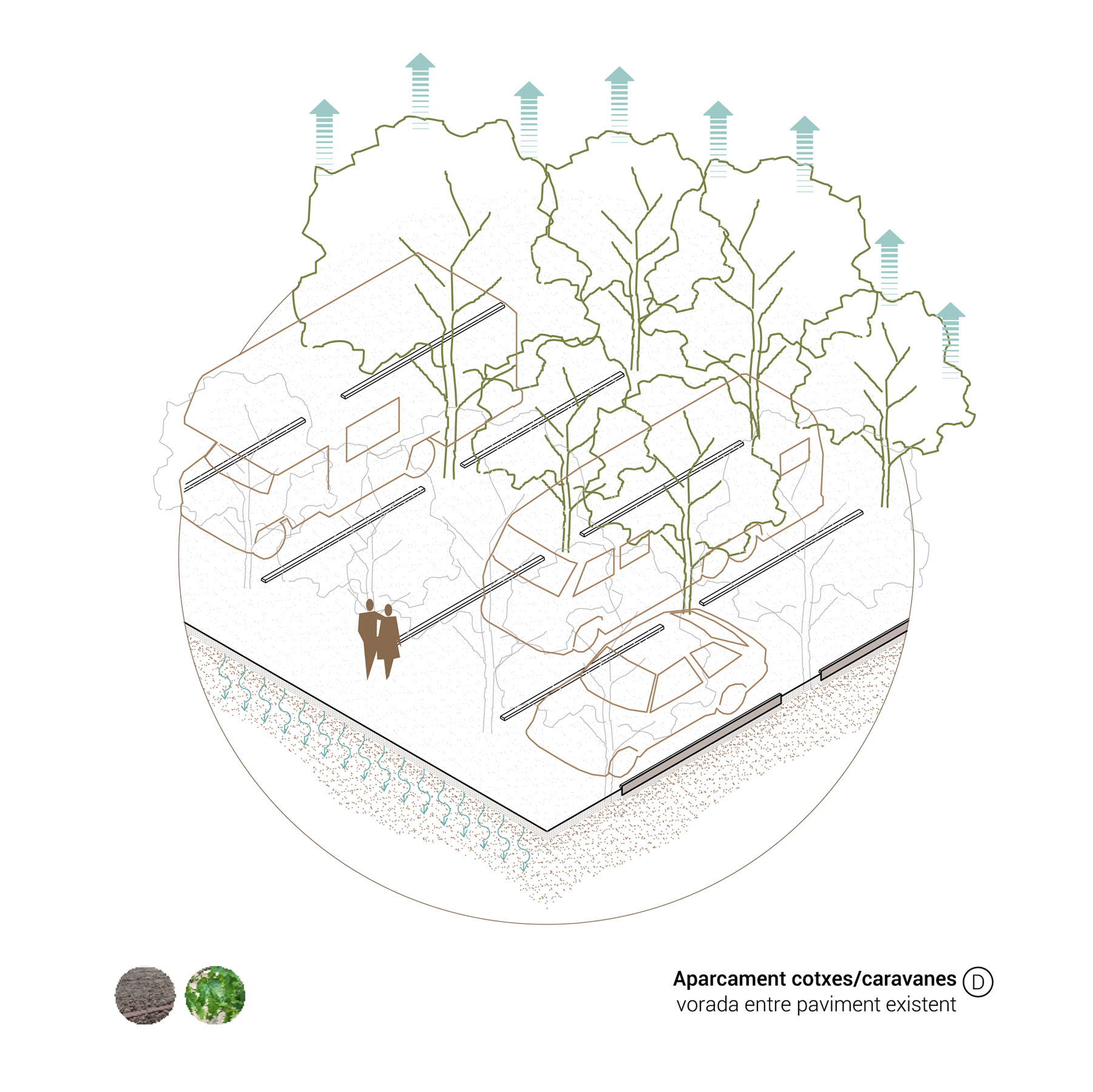
CONNECTIONS, ACCESSIBILITY AND USES
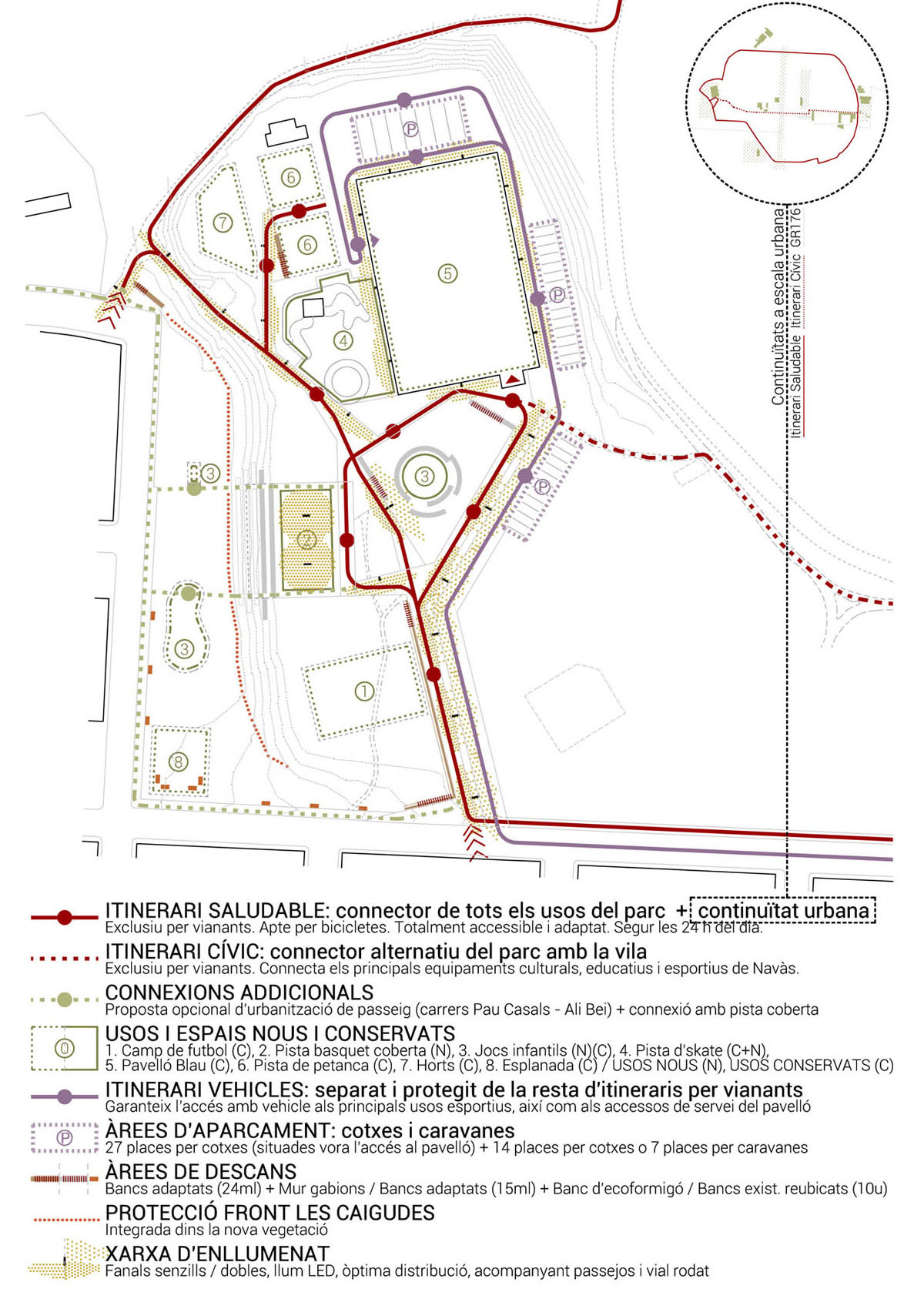
COMPATIBILITY BETWEEN EQUIPMENTS
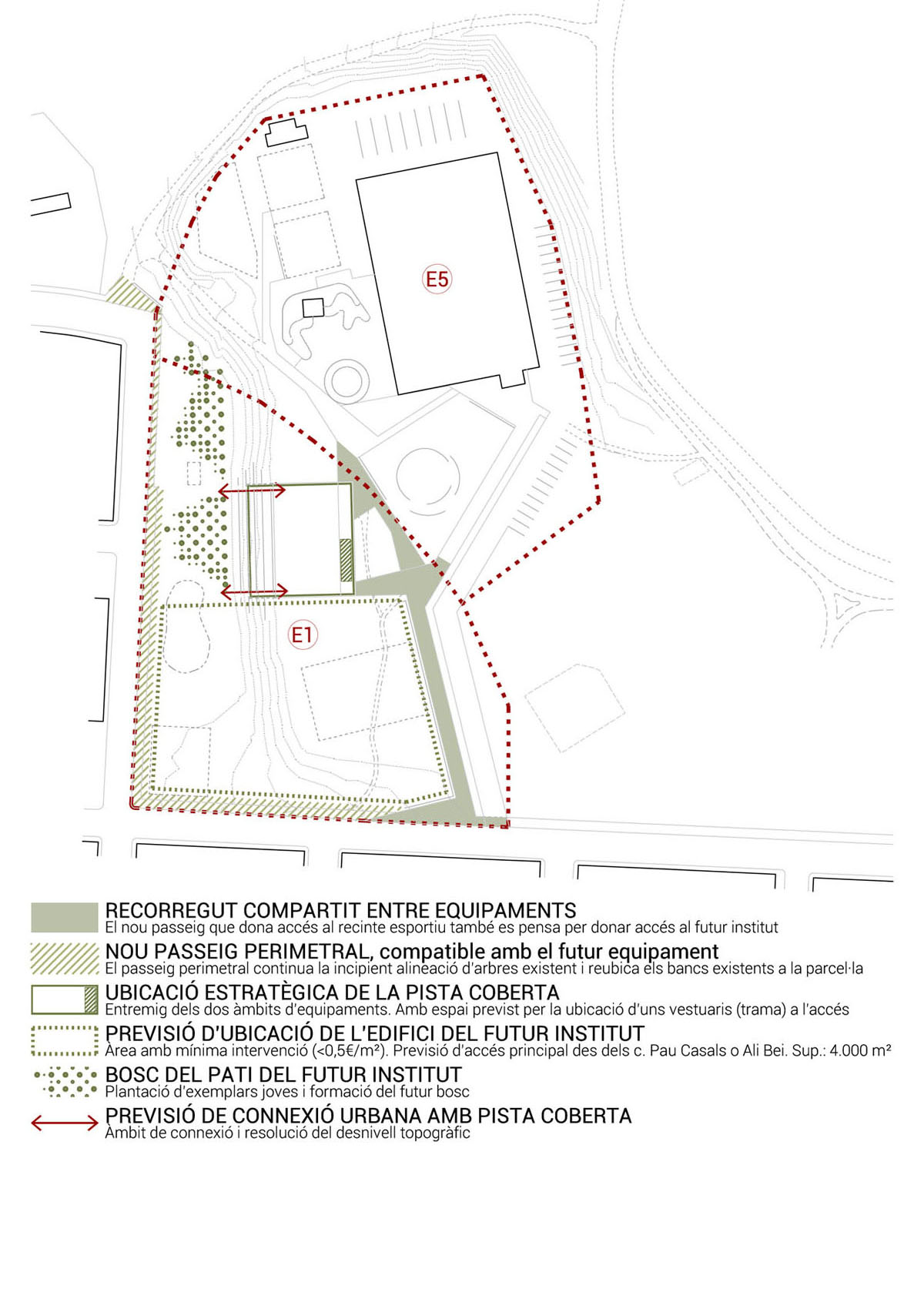
ENVIRONMENTAL SUSTAINABILITY
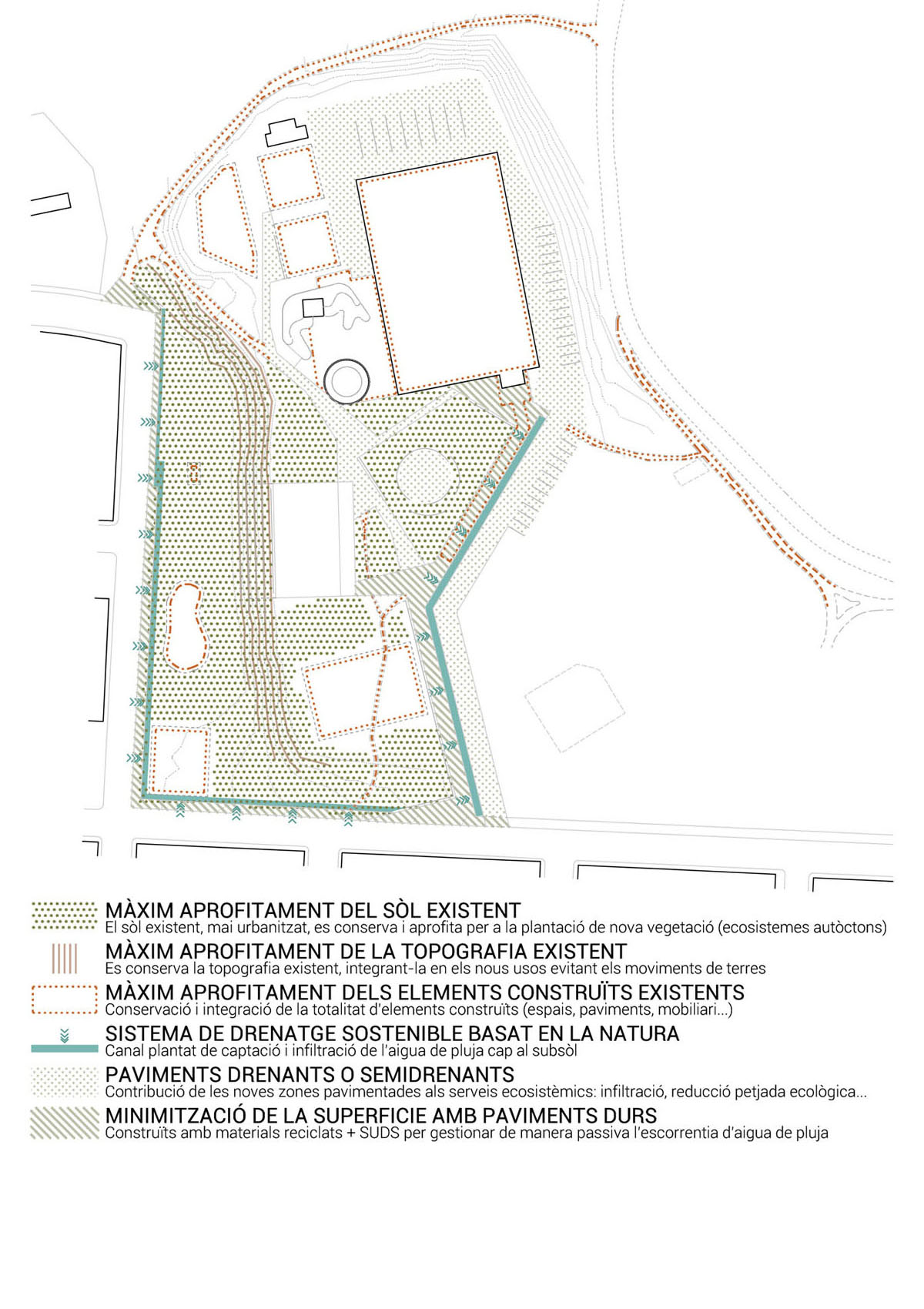
MATERIALITY
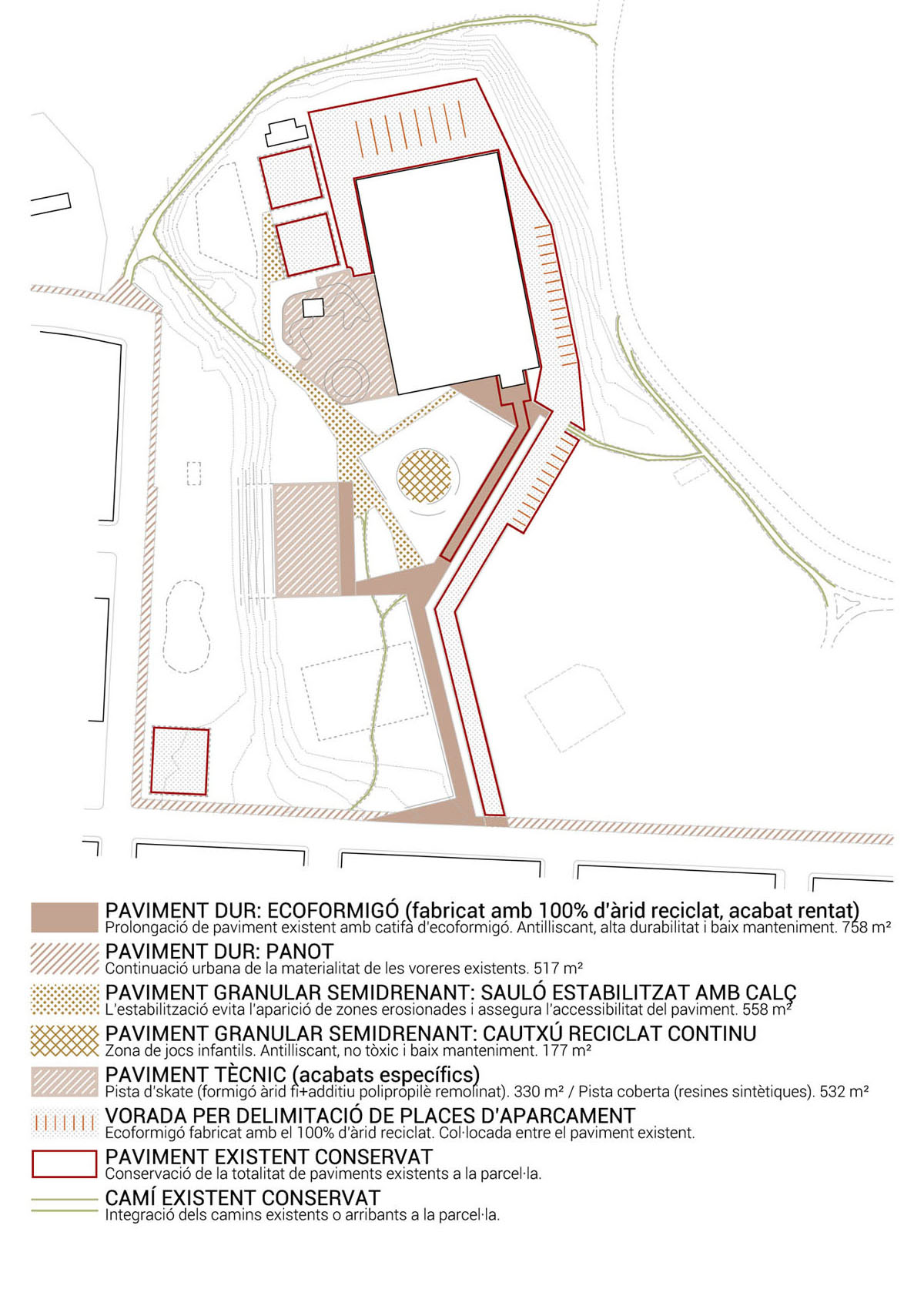
VEGETATION
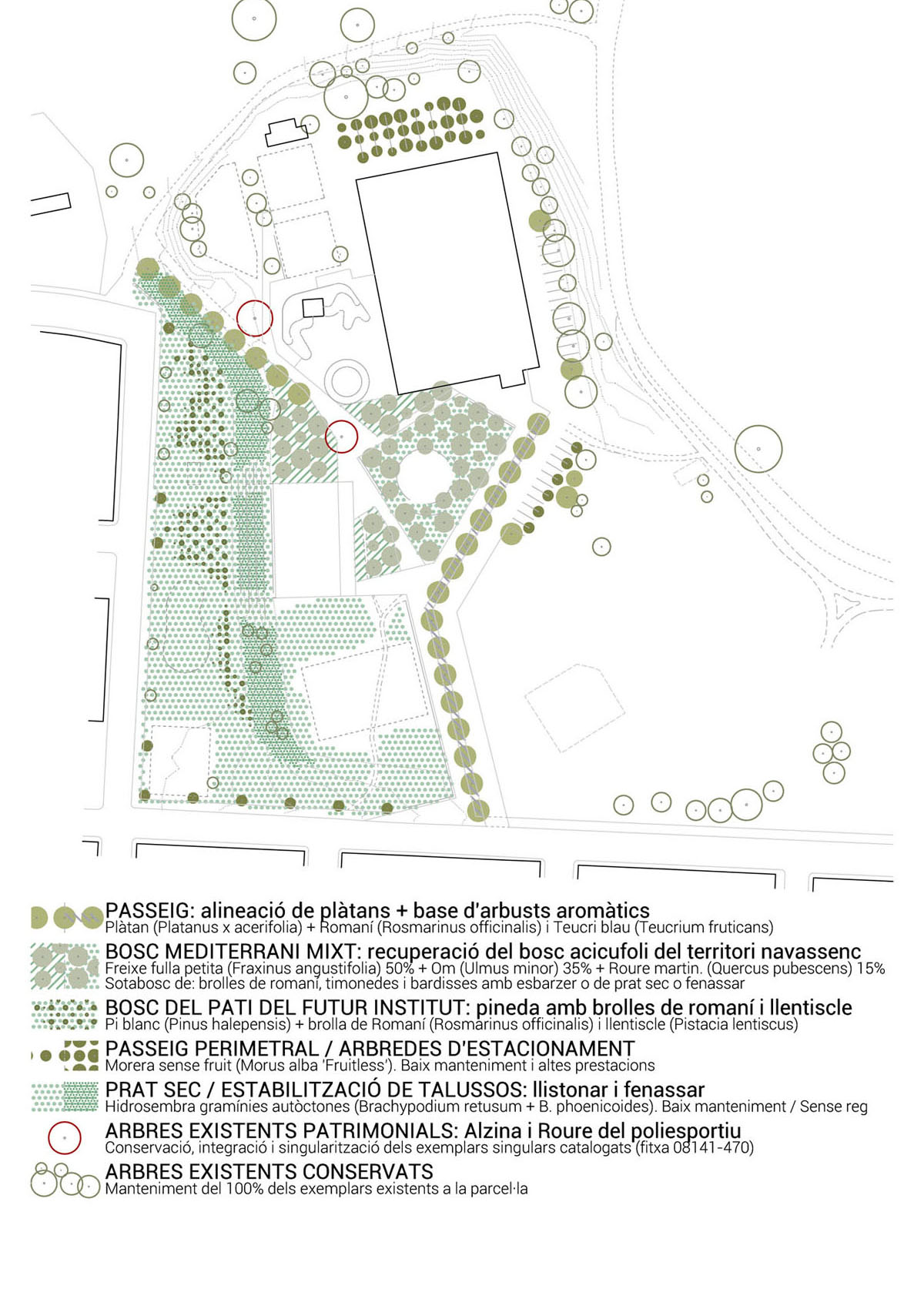
CLIMATE COMFORT
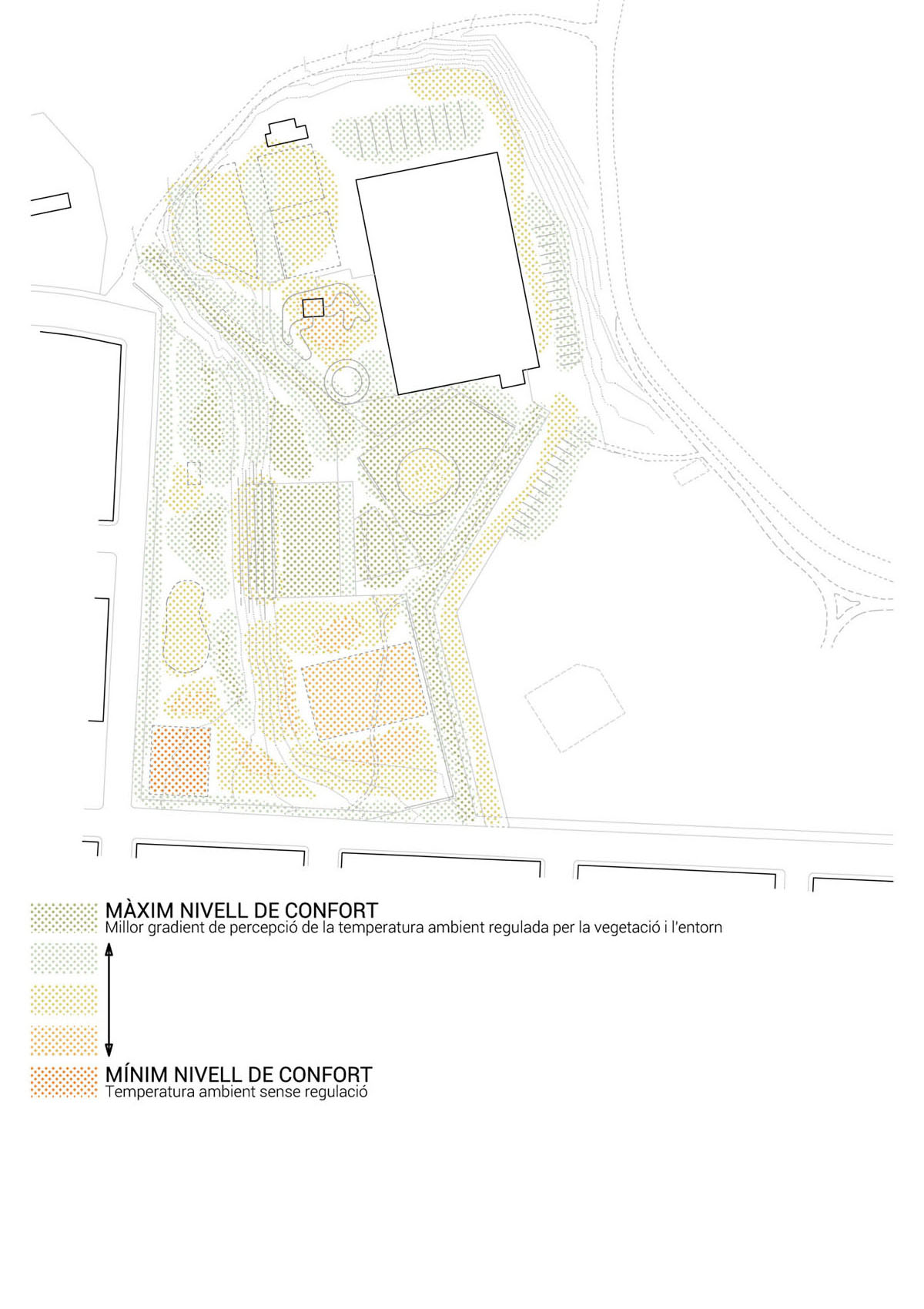
PRE-EXISTENCES AS A RESOURCE
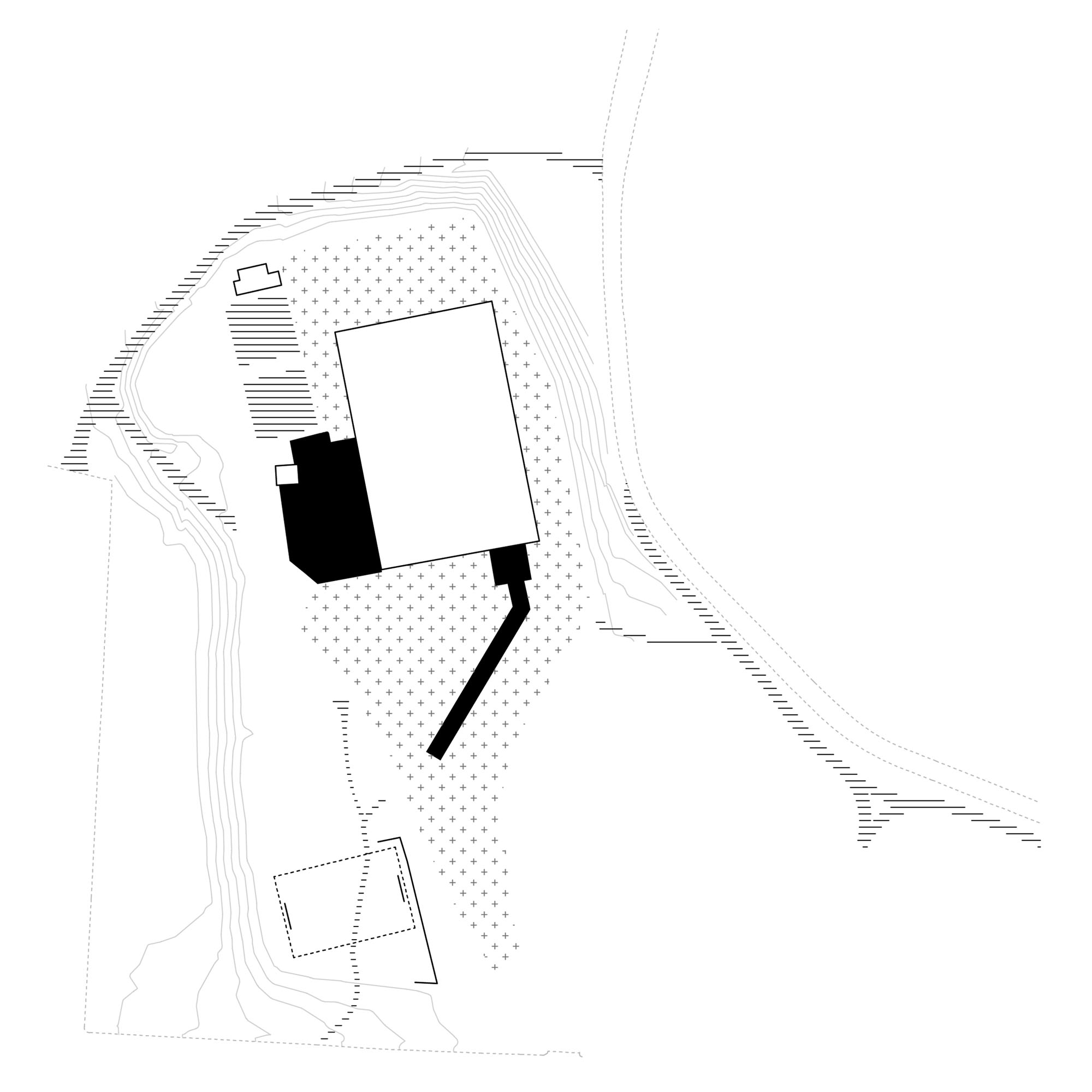
The detailed reading of the current area of the pavilion allows us to identify numerous pre-existences of different nature:
– areas paved with different materials
– sport areas with different degrees of urbanization (pétanque courts, skate area, space to practice football)
– vegetation from various entities (2 catalogued specimens)
– old roads
– spontaneous paths created by the routes of the inhabitants
All these elements are currently disconnected from each other. At the same time, we detect a lack of legibility of the urban access to the pavilion, which makes the pavilion and all its equipment hidden.
THE PAROMENADE: ARTICULATOR OF PRE-EXISTENCES WITH NEW USES
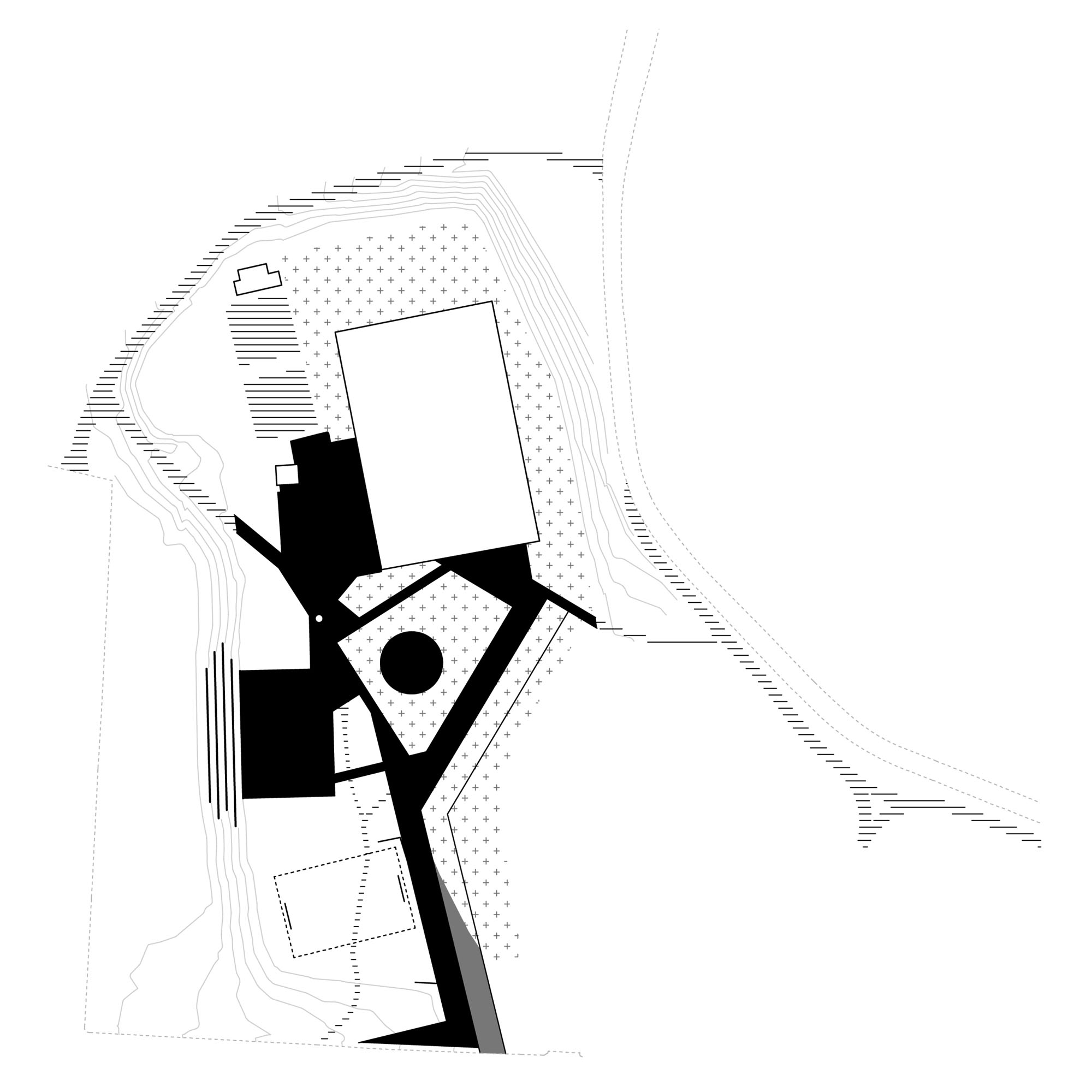
Pre-existing elements are understood as resources of value existing on the site and are therefore retained in their entirety. The urbanization proposal, therefore, is organized with the introduction of a new promenade that acts as a connector for all the existing elements, articulates them and gives them continuity. It also dignifies access to the Blue Pavilion. At the same time, it is the element that organizes the new spaces introduced such as the covered basketball court, the children’s playground or the café terrace, and it improves the connections to the areas of the skating rink and the pétanque court.
The promenade that we propose is a space designed for pedestrians, equipped with a line of trees that provides shade in the summer along the entire route. Within the scope, it also delimits the passage space for vehicles. It is the new backbone of this area and will give it a renewed identity.
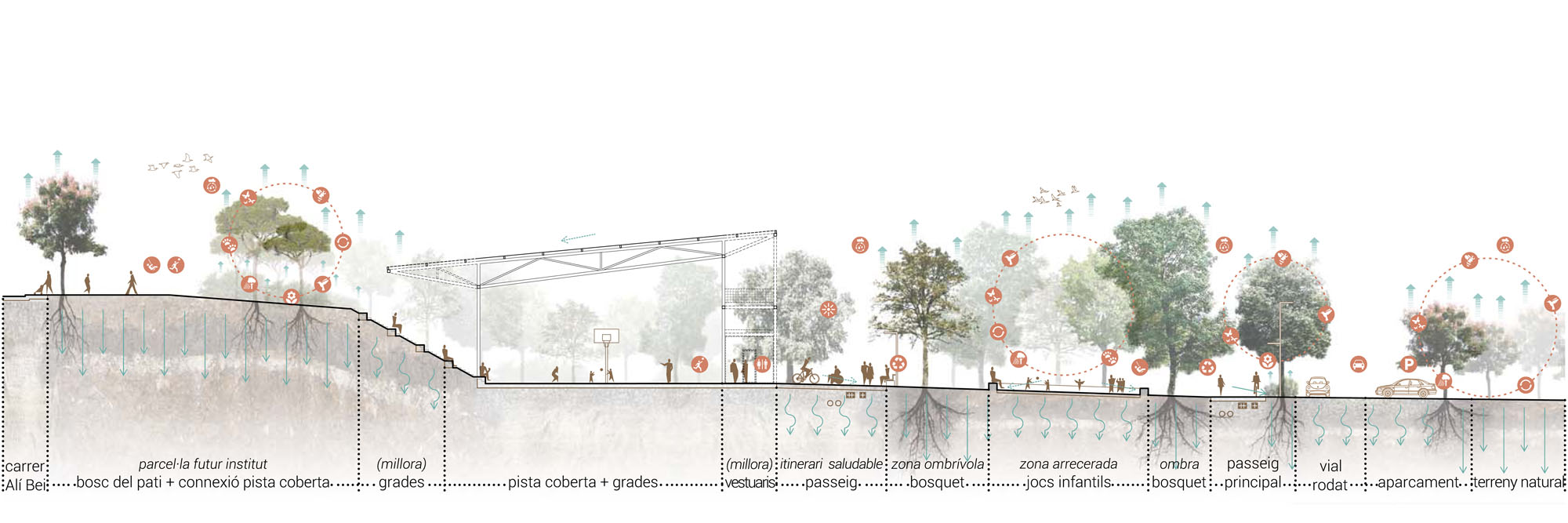
Natural and recycled materials
The paths and spaces proposed are, for the most part, permeable and draining spaces. The internal circulation paths are solved with sand stabilized with lime, allowing the natural drainage of water towards the land, and the space of the main promenade, which connects with the urban area and with the existing pavement of access to the Pavilion Blau is built with ecoconcrete washed from 100% recycled aggregate, of various colors, with rainwater evacuation into a sustainable drainage system based on nature, where the water will infiltrate into the banana plantations , rosemary and blue chervil. The pavement around the Pavilion is maintained for road use, incorporating integrated signage for car and motorhome parking lots.
The intervention system we propose avoids the generation of demolition waste, makes the most of the topographic conditions and soil quality of the area (never urbanized), preserves all the existing trees and recycles the construction elements already present within the work itself, allowing the energy consumption derived from the construction process to be substantially reduced.
This resource allows, at the same time, to amortize the investments made so far in this area and to optimize the investment for the new urbanization, investing where it is strictly necessary.
At the shelter of the forest and under cover
The living and walking spaces have tree and shrub layer vegetation, allowing correct regulation of humidity and temperature. This vegetation also provides wind protection to the new outdoor sports space, improving the environmental conditions provided by the cover that protects it from the sun and rain.
The existing slope in the area is taken advantage of to bring the space that will be used as an outdoor basketball court closer to it, thus allowing the slope to be converted into stands. It is proposed to generate the first two levels of benches with prefabricated concrete benches that will contain the current ground, and with the possibility of expanding them up to 5 rows and including stairs that would communicate with the upper level, as an improvement to the initial proposal.
The roof is simple with metal trusses and folded sheet metal. Two possible areas for improving the conditions of use of the space are proposed:
– A facade space towards the new promenade, with a second alignment of pillars and where changing rooms, track storage spaces and, on the upper level, viewpoints towards the track and towards the park could also be located .
– An overhang that would cover the extension of the proposed stands.
Introduction of native ecosystems
All the proposed plantings respond to those of species endemic to the site and to the improvement of the climatic conditions they will generate, either as areas of shade or protection from the wind. At the same time, species with low maintenance and low water requirements that will allow an increase in biodiversity in a sustainable and durable way have been chosen.
The alignments on the main promenade are planned with London planes (Platanus x acerifolia) and a base of aromatic shrubs: rosemary (Rosmarinus officinalis – low-growing shrub, on the edge of the promenade) and blue teucrium (Teucrium fruticans – medium-large growing shrub, as road protection).
In the various proposed areas of Mediterranean forest, which recovers the conifer forest of the Navassenc territory, we find small-leaved ash trees (Fraxinus angustifolia), elms (Ulmus minor) and oaks from Martinique (Quercus pubescens). In the area of the central forest where the new children’s playgrounds are located, the proposed undergrowth is a dry meadow of native grasses: marginal and slatted fens (Brachypodium retusum and Brachypodium phoenicoides), in the rest of the areas a stratum is introduced shrub composed of thyme (Thymus vulgaris), rosemary (Rosmarinus officinalis) and brambles (Rubus ulmifolius).
The parking areas will enjoy shade with a plantation of mulberry trees without fruit (Morus alba ‘fruitless’), which is also recommended to be planted along the perimeter of Pau Casals and Ali Bei streets, following the existing incomplete planting.
In the area of the future institute, a distinction has been made between the area planned for the construction of the equipment and the area of the plot that will remain free, with different levels of planting in the “forest of the courtyard of the future institute” where pine groves (Pinus halepensis) are proposed for reforestation with rosemary (Rosmarinus officinalis) and mastic (Pistacia lentiscus) bushes, along with hydroseeding of native grasses suitable for slope stabilization, which with minimal initial intervention and no subsequent irrigation, allow these spaces to be green.
